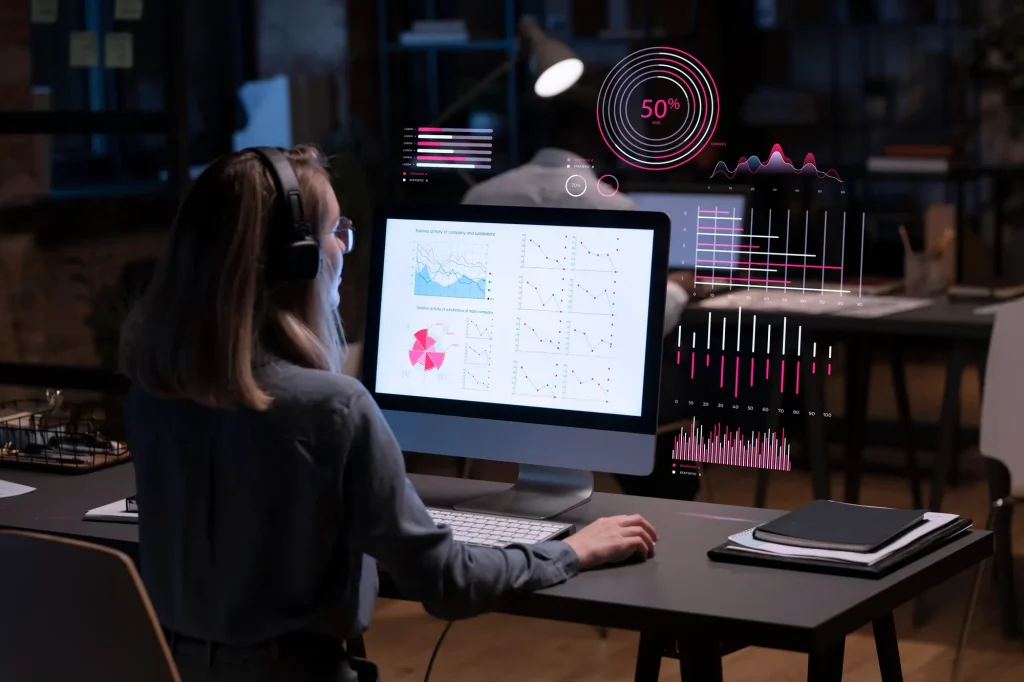Artificial Intelligence (AI) is reshaping the landscape of workforce management, introducing a level of transformation previously unseen in the realm of Human Resources (HR).
By integrating AI into HR processes, companies are not only streamlining operations but also leveraging data-driven insights for strategic decision-making.
One of the key drivers for adopting AI in HR processes is the ability to utilise AI workforce management tools that enhance productivity and efficiency. These tools help in predictive workforce planning and workforce forecasting with AI, empowering organisations to effectively align their workforce with business goals.
AI technology also automates repetitive tasks, allowing HR professionals to concentrate on higher-value activities such as employee engagement and development.
Enter MiHCM, a leader in AI-powered HR management. MiHCM provides comprehensive solutions that combine predictive analytics, real-time data insights, and AI-powered automation. This approach transforms workforce management, delivering smarter spending decisions and data-driven HR insights essential for dynamic business environments.
Leveraging predictive analytics

In the realm of strategic workforce planning, AI has emerged as a pivotal tool by harnessing predictive analytics.
This technology scrutinises numerous data sets to foretell staffing requirements, assess skill gaps, and recommend necessary workforce adjustments.
With AI workforce management tools, businesses can transition from mere headcount approaches to dynamic, skills-based strategies, ensuring that talent aligns with evolving business objectives.
Benefits of AI in long-term planning
- Predict workforce performance: Organisations can leverage AI to anticipate future workforce needs. Tools such as those offered by MiHCM not only predict workforce performance but also analyse patterns in employee engagement and development.
- Optimised workforce planning: By using AI-driven insights, businesses optimise their workforce planning, enhancing flexibility and reducing operational costs. This optimisation empowers companies to mitigate risks associated with overstaffing or understaffing.
Furthermore, AI’s ability to generate real-time analytics significantly contributes to strategic oversight by offering an actionable overview of workforce dynamics.
This strategic workforce planning with AI ensures HR managers can focus on essential initiatives, such as enhancing employee productivity and engagement.
A prominent example of AI’s impact on strategic workforce management is seen in IBM’s shift toward a skills-centric model driven by AI.
By implementing predictive insights, IBM efficiently aligned talent with its new cloud computing strategies, ultimately reducing time-to-hire by 50% and increasing learning engagement by 25%, highlighting the transformative power of AI in reengineering workforce strategies.
To thrive in today’s competitive landscape, adopting AI tools can aid companies in turning data into strategic advantages.
Streamlining HR operations
With AI workforce management tools, HR processes, such as payroll, attendance tracking, and leave management, are seamlessly automated. This shift not only boosts efficiency but significantly reduces the repetitive administrative tasks that often burden HR professionals.
AI-driven technologies improve workflow by ensuring real-time data processing capabilities, which are crucial for informed decision-making. With instant access to up-to-date information, managers can respond swiftly to workforce needs and strategic priorities.
Here are some key benefits of automating HR processes with AI:
- Enhanced efficiency: AI minimises human error by automating data-driven tasks, ensuring more precise payroll and attendance management.
- Reduced manual workload: With AI handling routine processes, HR teams can focus on strategic initiatives, such as employee engagement and development.
- Real-time decision making: AI offers HR managers rapid insights through real-time data analysis, aiding in swift and accurate decision-making.
According to best practices in AI implementation, successful adoption of AI in HR can drastically improve productivity. It allows HR professionals to shift their focus from manual operations to strategic contributions, aligning workforce capabilities with business strategies.
Furthermore, companies leveraging AI, like those using the comprehensive solutions provided by MiHCM’s suite, experience enhanced prediction of absenteeism and strategic workforce planning. Such advancements foster a more streamlined and responsive HR environment, paving the way for a workforce aligned with future business demands.
Dynamic evolution
The landscape of AI workforce management is set for a dynamic evolution as new technologies continue to emerge in the realm of HR management.
One significant trend poised to influence workforce automation is the integration of advanced machine learning algorithms. These algorithms will enable HR departments to make more informed decisions by analysing complex data sets, resulting in more effective workforce planning with AI.
Moreover, AI innovations are adapting to the changing workforce needs by offering enhanced personalisation in learning and development pathways. Personalised predictive workforce planning allows companies to cater to individual employee needs, ensuring skill development is tailored to align with personal and corporate growth.
Potential challenges

Despite the promising trends, organisations must be wary of potential challenges that can arise with AI integration.
For instance, securing data privacy remains a paramount concern, alongside ensuring unbiased AI systems. Furthermore, a collaborative approach that balances AI automation with human judgment is crucial for successful implementation and overcoming resistance to change.
In this evolving landscape, solutions like MiHCM’s comprehensive suite are pivotal. By embedding AI-driven features and insights, these solutions provide companies with the necessary tools to navigate the challenges in workforce management, driving strategic success and productivity.
As AI technologies progress, embracing these trends and overcoming associated challenges will be vital for companies aiming to thrive in a future that increasingly values flexibility, personalisation, and efficiency.
Solutions like MiHCM’s suite of products are revolutionising the approach to workforce management by offering tools designed for predictive analytics, real-time data insights, and personalised learning paths.
By harnessing these technologies, companies can address future challenges, such as skill mismatches and employee disengagement, leading to a more adaptable workforce environment.
Implementing AI-driven HR solutions encourages a culture of constant innovation, paving the way for a more resilient and forward-thinking business strategy.



